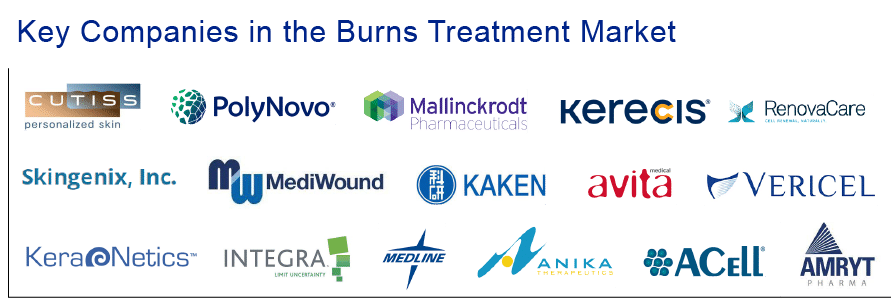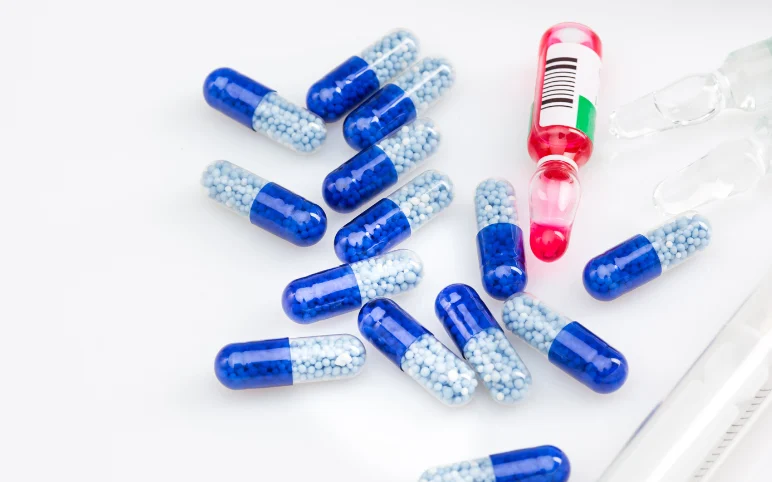Can denovoSkin Be A Lifesaver for Burn Victims?
Jul 15, 2022
Burn is a global public health problem, causing more than 180,000 deaths per year across the world. The vast majority of these occur in low- and middle-income nations. Moreover, non-fatal burns are a primary source of morbidity, resulting in lengthy hospitalization, deformity, and disability, as well as stigma and rejection. As per the analysis conducted by DelveInsight, among the seven major countries [the US, EU-5 (Germany, France, Italy, Spain, and the UK), and Japan], the burden of burn victims is high. In the US alone, the incident population of burn patients requiring treatment was around 662K in 2021, which is expected to increase at a CAGR of 0.69% by 2032 in our forecasted period of 11 years (2022–2032).
Burn injuries are often overlooked injuries responsible for causing significant morbidity and mortality. Severe burns are associated with an immune and inflammatory response, metabolic changes, and distributive shock, all of which are difficult to manage and can lead to multiple organ failures. They cause profound long-term changes that are needed to be addressed to maximize the quality of life. These injuries are generally classified based on their severity, depth, and size.
Re-epithelialization in severe cases of burns is often difficult. Skin autografting by using full-thickness skin grafts (FTSGs) or a split-thickness skin graft (STSG) is used to treat the severe cases of burn victims whose dermis is lost and have a full-thickness defect and is not possible for surgeons to treat. These grafts are harvested from the patients themselves and possess huge disadvantages. First, in the acute cases of burns, there is no site from where grafts can be harvested, and finding a match for allotransplantation is impossible in emergencies. Second, the harvested sites are scarred for life.
Downloads
Click Here To Get the Article in PDF
CUTISS AG, a Swiss company, focused on regenerative skin medicine and tissue engineering, is developing an Advanced Therapy Medicinal Product (ATMP), denovoSkin, comprising cells isolated from a stamp-sized patient split-thickness biopsy and cultured over a collagen hydrogel. Re-harvesting and meshing of STSG have always been a major problem with the grafts available in the burns market. denovoSkin is a dermo-epidermal skin graft that addresses the issue of insufficient permanent skin coverage, which is a major problem in case of severe burn injuries. The Phase I burns clinical trials revealed a well-stratified epidermis and a dermal compartment, studied over 3 months.
The current treatment for burns is mainly dominated by advanced dressings, traditional burn care products, biologics, and others. Advanced dressings include alginate dressings, hydrogel dressings, foam dressings, hydrocolloid dressings, collagen dressings, and others. Biologics, including skin grafts and other traditional burn care products, are also widely used. The burn treatments and rehabilitation available for burns are quite expensive and still have huge unmet needs.
As per our analysis, the US captured the major burns market share of approximately 54% in the 7MM in 2021. Among the five major European countries, the UK had the highest burns market size with USD 160 million in 2021, followed by France and Germany, with an estimated burns market size of USD 103 million and USD 85 million, respectively.
With its permanent, dermo-epidermal structure, denovoSkin has the potential to raise the bar in skin grafting for burn treatment. Due to its autologous nature, there is no rejection following transplantation, and the product is safe. Surgeons could avoid re-harvesting and meshing of STSG by using denovoSkin altogether. The healthy donor site could be used to its full potential, with superior aesthetic and functional results. Moreover, denovoSkin could benefit burn survivors who want to correct their scars after the acute burn phase. Considering the expenses and degraded quality of life faced by the burn victims, denovoSkin has a promising potential to become a compliant solution to their problem.
CUTISS's products were initially manufactured at the GMP facility of the University of Zurich's Wyss Zurich Regenerative Medicine Technologies Platform. But now, it has become one of the first companies to transfer its regenerative medicine technology at Wyss Zurich to CUTISS, achieving full independence in its manufacturing capabilities with an onsite facility.
Swissmedic, EMA, and FDA have also granted denovoSkin, an Orphan Drug Designation for the treatment of burns. Zühlke Engineering and CSEM are the Swiss engineering companies majorly involved in developing this drug. These designations will help denovoSkin develop as the first-in-class automated-produced tissue therapy that can treat children and adults in a safe, effective, and accessible way. Other elective/reconstructive indications (tumor resections, plastic surgery, and so on) may also benefit from this technology. It promises to take skin surgery to the next level and revolutionize the current treatments for burns.

Currently, some commercially available skin substitutes in the burns market are Epicel, StrataGraft, RECELL System, Split thickness skin graft, Kerecis Omega3 products, and several others. However, burns continues to present a significant public health problem, resulting in scores of preventable deaths and disability every year. Leading companies apart from CUTISS AG such as MediWound Germany GmbH, Kaken Pharmaceutical Co., Ltd., Kerecis, Mallinckrodt Pharmaceuticals, Avita Medical, Vericel Corporation, KeraNetics, Integra LifeSciences Corporation, PolyNovo, Medline Industries, Anika Therapeutics, Inc., ACell, Inc., Amryt Pharma, Skingenix, RenovaCare, and others are also developing innovative products to cope the global burns burden.
As a result, the dynamics of the skin burn market are anticipated to change in the coming years due to the improvement in burns treatment, incremental healthcare spending across the world, and the expected launch of emerging burn therapies during the forecast period. Other than denovoSkin, promising advanced treatment therapies in the burns pipeline include MW-III (Skingenix), CellMist System (RenovaCare), and others. The launch of these products, along with denovoSkin, will bring a revolutionary change in the burns market in the future and can be a ray of hope for millions of burn victims.

FAQs
Depending on how severe or extensive the burn is, there are several types of burn symptoms. The first few hours or days following a burn are frequently when symptoms are the worst. The common burn symptoms include blister, pain, swelling, and others.
A number of factors can cause a burn. The most prevalent burn causes are thermal sources, which include fire, hot liquids, steam, and contact with hot surfaces.
Currently, medication, wound dressings, therapy, and surgery are used for burn treatment. The therapeutic aims are to control pain, remove dead tissue, avoid infection, limit the risk of scarring, and restore function. The therapy is determined by the degree of the burn.
Leading companies such as MediWound Germany GmbH, Kaken Pharmaceutical Co., Ltd., Kerecis, Mallinckrodt Pharmaceuticals, Avita Medical, Vericel Corporation, KeraNetics, Integra LifeSciences Corporation, PolyNovo, CUTISS AG, Medline Industries, Anika Therapeutics, Inc., ACell, Inc., Amryt Pharma, Skingenix, RenovaCare, and others are currently working in the burns market.
Other than denovoSkin, promising advanced treatment therapies in the burns pipeline include MW-III (Skingenix), CellMist System (RenovaCare), and others.
Downloads
Article in PDF



